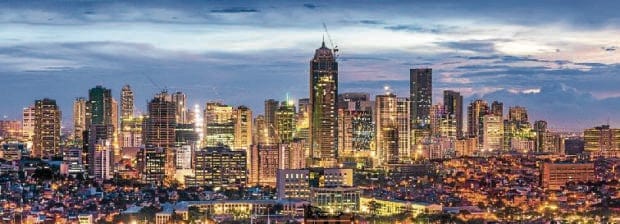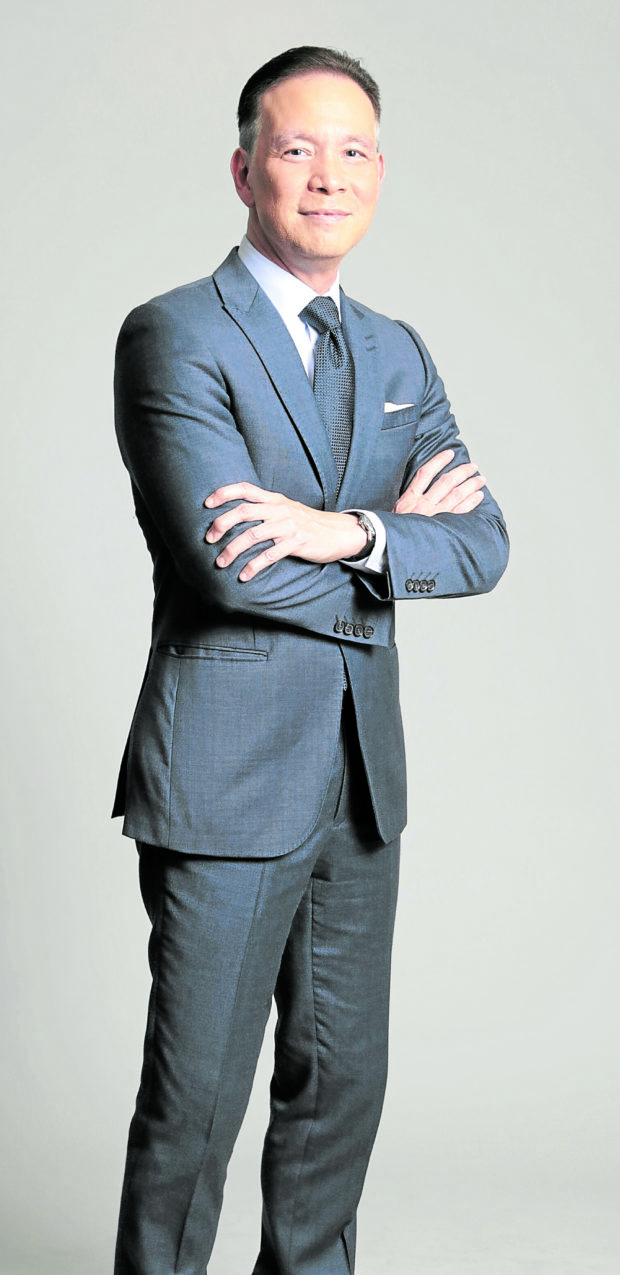
After more than a year into the pandemic, the Philippines may finally see a sustained recovery owing to new strategies that are seen to facilitate economic rebound in the near term.
As think tank Moody’s Analytics reported this week, fast-tracking the nationwide inoculation drive, incentivizing the vaccinated and imposing localized quarantine may help an economy that has been very sluggish under the weight of severe and lengthy lockdowns.
Such developments bode well for industries like real estate, which has also seen its fair share of challenges amid the devastating difficulties dealt by this protracted global health crisis. And with the onset of the so-called “-ber” months—traditionally a season that brings hope and joy to many Filipinos—one could only hope for better days ahead.
But will the Philippine real estate industry, which has seen a glorious decade of unprecedented stellar growth, finally see that proverbial light at the end of the tunnel? Will improvements in the business and consumer sentiment translate into increased demand? Are investors now more optimistic of their prospects and willing to bet big again in real estate?
Inquirer Property polled some of the country’s top officials and industry experts to give their thoughts on how the real estate industry fared in the past months, their forecasts for the last quarter of the year, and their insights as to what will be crucial for its continued recovery.
Nestor J. Padilla
President and CEO Rockwell Land Corp.
I think we all did very well in the first half inspite of the lockdown in March and April as the vaccination started to also gain some traction. This recent lockdown in August, unfortunately, put the fear back, (along) with the Delta variant and the record high cases. As long as we open up soon, 2021 won’t be as bad as 2020. But it better be this month of September.

Jose Emmanuel H. Jalandoni
President and CEO Ortigas Land
The pandemic has greatly affected all industries, and the real estate industry is not spared from its effects. Within the industry, some segments are faring better compared than others—the office sector with BPO tenants is more resilient. The residential segment, depending on location, is still selling. However, retail and hospitality segments are most challenged given mobility restrictions.
Given the increasing vaccination rate, we hope that by yearend, there will be increased mobility for everyone. Higher mobility will allow more business activity, which supports retail and tourism.
The silver lining in this situation is the sustained and hopefully increasing vaccination efforts of the government and cooperation of all sectors of society. We will all need to work together to get majority of Filipinos vaccinated by yearend. With this, we can all look forward to a joyous and safe Christmas.

Josephine Gotianun-Yap
President and CEO Filinvest Land Inc.
Filinvest Land, Inc. sees a consistent recovery trend for the Philippine real estate industry this year due to the easing of quarantine restrictions and faster roll out of COVID-19 vaccine programs.
In the first two quarters of 2021, our residential revenues have increased by 76 percent. Figures showed reinforced demand for our smart-value homes brand Futura by Filinvest and lifestyle middle-income brand Aspire by Filinvest. We have achieved these results on account of our agility and adaptability, which also enabled us to accelerate our digitalization.
Our focus on first time homeowners and ultimate end users allowed us to recover from last year’s challenges in the residential sector. As we aim to build the Filipino dream, our Aspire and Futura residential options address budget constraints and lifestyle preferences, thus catering to the changing needs of our homebuyers.
We are always embarking on new initiatives on co-living spaces along with logistics and e-commerce warehouses which will broaden the base of our investment properties for recurring income. Innovation in our businesses will remain our priority. We continue to develop products and services responsive to the current needs and movements in the markets we serve.
Filinvest Land has a P30 billion pipeline of residential projects waiting in the wings for launch as market conditions further improve and we are gearing up to expand our footprint in provinces like Bataan, Naga, Dagupan and General Santos.
Consumer confidence will increase as many Filipinos get inoculated every day. This is why we have rolled out our free conglomerate-wide vaccination program FilVax for our employees and third-party service providers so they would be safe and healthy. We want our customers and business partners to “FilFree” to come to us and “FilSafe” to work with us. We eye to immunize all our employees by the fourth quarter of 2021, and attain workplace herd immunity.

Richard Raymundo
Managing Director Colliers Philippines
It is a mixed bag. For the office sector, we saw an improvement in transactions but net take up was still in the negative territory because of vacated space.
There was an improvement in transactions year on year in the first half. In Metro Manila, this was up by 10 percent to 223,000 sqm of transacted office space as compared to 202,000 sqm in the first six months of 2020. This was consistent with the trend outside Metro Manila at 63,000 sqm in the first six months—up 36 percent from 46,000 sqm a year ago.
If we factor in space vacated, net take up for the first half of 2021 was -121,000 given that we lost 41 percent of Pogo (Philippine offshore gaming operators) tenants in Metro Manila. Hopefully, we see a slowdown in the space being vacated by Pogos. From a high of 1.34 million sqm occupied by Pogo, it is now down to only 790,000 sqm.
We are seeing a slowdown in declines in rents. So that is a positive indicator. What we need to look out for is the upcoming supply that will be completed and could put pressure on vacancies.
For residential, there were 10,000 units taken up in the primary market for the first six months—a 50 percent decline from 20,400 units in the same period last year. The segment that is quite active is the mid-income condominium priced at P3 million to P6 million per unit.
Developers had to be more creative with residential projects. While sales of condominiums in Metro Manila were lower compared to last year, the mid-income segment has been active. Well designed projects in fringe locations with attractive payment terms continue to record good take up. There is also interest in mid-income house and lot projects outside the city as buyers are looking for space.
We need to get a large proportion of the population vaccinated so we can increase mobility and get the real estate industry moving again. Metro Manila may be the first to reach a high level of population protection and eventually herd immunity at nearly 50 percent full vaccination. That will have a significant effect and give confidence to the real estate sector. Next would be the surrounding provinces and then the larger cities like Cebu and Davao.
As long as interest rates are stable, then we see stability in prices. The difference between this crisis and the 1997 Asian financial crisis is that interest rates spiked in AFC while our current rates have led to relatively stable real estate prices.
We have likewise seen consumption improve when we eased into the GCQ as COVID-19 numbers went down. The opposite was true when we had to tighten restrictions due to the Delta variant. The success of the REIT listings is also reflective of liquidity in the market and that investors are looking at new instruments that are stable and could provide good dividend yields.

Shiela Lobien
CEO Lobien Realty Group
Statistically, I see that the real estate industry is showing resiliency and patience for the market to recover.
For the office space industry, which is one of the key economic indicators of the real estate market as a whole, the supply side is quite healthy. Overall office supply is at 350,000 sqm, almost the same level as of August 2020. Vacancy is at 14 percent, which is not concerning if viewed regionally. Rent is just 2 percent down for Metro Manila CBDs and pipeline supply is healthy, with Quezon City, the Bay area and Makati bulking up their pipelines.
On the demand side, BPOs are expected to maintain their employment levels, with some projecting incremental hiring, and for Pogos, despite the lockdowns and other regulatory and legal issues, 50 percent of them stayed. Once the public health issue is controlled and lockdowns are no longer implemented, we will see them return.
The provincial office market is performing better this year. Office supply remains steady at 300,000 sqm but take up is higher this year at 34 percent versus 19 percent for the same period last year. This is a logical result of the lockdowns in Metro Manila which made some companies prefer to locate their operations in the provinces.
If we are able to go back to 2019 pre-pandemic economic levels, then we are on our way to recovery this year. Metro Manila was the hardest hit in 2020 due to the lockdowns—with a GDP contraction of almost P1 trillion. Once the lockdowns stop, we will see NCR to be among the first to recover, which is expected as the vaccination drive is concentrated here. At the moment, we already see positive movements in the office and residential markets. Despite the pandemic, these two real estate sub-segments are holding their ground. Warehousing was the one which showed the best performance but I expect the hotel and leisure industry to be the laggard due to travel restrictions and the low confidence of tourists to travel. I can think of three crucial factors for the recovery of the industry: vaccination, “Build, Build, Build” and the low interest rate regime. We need the vaccination efforts to be successfully implemented at the fastest possible time as this is the most important ingredient for our economic recovery. The infrastructure projects of the government should continue and be done at full speed to provide employment and prop up the economy, while waiting for the private sector to have the confidence to participate in the economy. Here, credit and low interest rate will be a good incentive for these investors to restart their participation and investing activities.

Tomas P. Lorenzo
CEO Torre Lorenzo Development Corp.
Almost two years into the pandemic, we have seen that real estate companies are now more prepared to adjust and move forward with their plans. In the first few months of the lockdown last year, there was a lot of uncertainty regarding reopening of business and mobility.
With vaccination gaining ground this year, we have seen a slow but steady comeback for the industry. In TLDC, we pivoted to digital platforms, and we have been creative in offering flexible payment terms to customers.
We continued with the planning and construction and we are on track to turn over projects in Metro Manila and Davao this year. The industry was gaining traction in the second quarter as more developers were prepared to navigate through new community quarantines.
We see opportunities outside NCR as more people look towards the provinces to improve their living experiences during the pandemic. There is potential in key markets outside NCR where cases are not as high and restrictions are not as stringent. We see a preference for locations that are still within driving distance from Metro Manila, like South Luzon.
We see opportunities in regional growth hubs that are as well-connected but not as crowded as NCR, like Davao.
That said, those who have invested in centrally-located condominiums now see their units as convenient halfway homes or conducive spaces for study or work-fromhome, so we see demand to remain robust.
We are encouraged with our sustained vaccination drive, with NCR approaching the 50-percent mark for fully vaccinated individuals. While the Delta variant disrupted established response systems, we also noted that countries with high vaccination rates are able to return to pre-pandemic activities much more easily and with less risks.
We think the key to recovery still is a consolidated pandemic response focusing on getting as many people vaccinated and tested as possible. We hope that the sustained vaccination rollout will continue to hit immunity targets.

Thomas F. Mirasol
President and COO Federal Land Inc.
The big players in the property sector have been reporting a steady recovery and are predicting to see a performance closer to pre-pandemic sales by mid to end 2022.
For Federal Land, we fared much better this year compared to the pandemic months of last year.
We see signs of increased consumer confidence and moderate spending in the coming months.
We also observed favorable opportunities from the middle and high-income market segment, where most of our residential projects are.
In line with forecasts by industry experts, we are optimistic that the industry is heading towards continued gradual improvements.
The recovery will be dependent on several factors such as the control of the upsurge of COVID-19 cases, vaccination drive and easing of restrictions in areas where health and safety measures can be implemented consistently and reliably.
We see silver linings on the strong performance in the upscale and luxury segments. We noted that business owners, entrepreneurs and investors are amassing funds and investing in real estate. The reason being that, it’s a safe haven especially in uncertain times.
I am not an expert in public health policy, but in FROMB2-1 my opinion what is needed to continue the positive momentum is to implement selective lockdowns. Granular lockdowns can be implemented in areas that need them while eased restrictions can be set for areas where a strict implementation of safety, sanitation, social distancing and other appropriate safeguards can be assured.
More importantly, the road to recovery is dependent on the fast and continuous immunization strategy. Until this is in place, prioritization will always be on balance sheet resilience.
For us at Federal Land, we shall continue to fulfill our commitment to provide a better living experience by creating developments with improved form and function addressing the consumer’s evolving needs particularly on the safety, security, wellness and connectivity aspects.
Article and Photo originally posted by Inquirer last September 7, 2021 11:53pm and written by Amy R. Remo.








More Stories
Vista Land Celebrates 50 Years with Sandiwa: An Event Honoring Leadership, Legacy, and the Filipino Dream of Homeownership
Vista Land Celebrates Love Month in Ilocos Region
Vista Land Bridges Cebuano Heritage and Progress with Valencia by Vista Estates